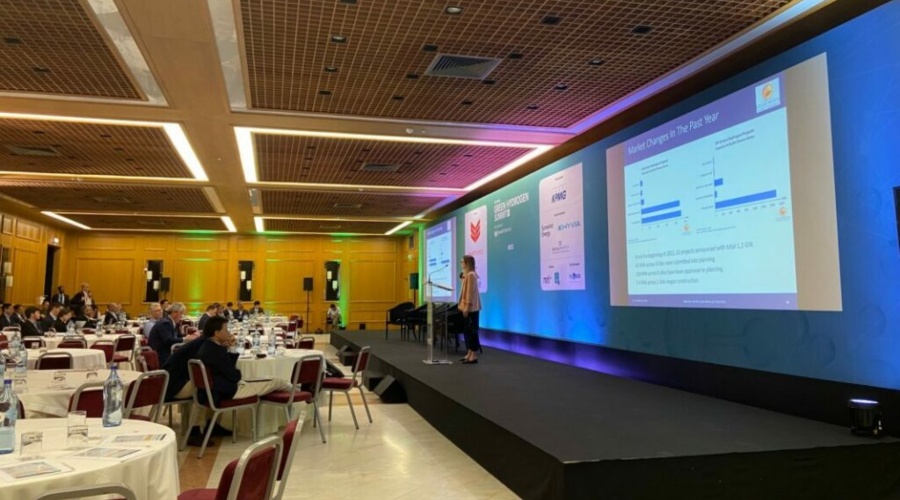
“The UK’s green hydrogen pipeline has grown to 1.8GW across 72 sites,” Molly McCorkingdale, market analyst at Solar Media, said at the Green Hydrogen Summit in Lisbon, Portugal, earlier this week.
The UK, which according to McCorkingdale, is “well positioned to be a leader in low-carbon hydrogen production”, currently has just 17MW operational across 36 sites in the UK. This capacity is primarily made up of demonstration sites and hydrogen refuelling stations for the transportation sector.
Of this 17MW capacity, proton exchange membrane (PEM) electrolysers are the predominant method in producing green hydrogen. This popularity also extends into the UK’s current green hydrogen pipeline.
The 1.8GW of planned green hydrogen in the UK primarily consists of PEM and alkaline exchange membrane (AEM) electrolysism however, 1.4GW of this pipeline currently has not disclosed what technology will produce the green hydrogen due to being in the very early planning phases.
AEM electrolysis makes up 26MW across 14 sites whereas PEM contributes 404MW across 45 sites.
This pipeline started to scale significantly throughout 2022. McCorkingdale said: “Since the beginning of 2022, 32 projects have been announced, adding a total of 1.2GW capacity. Throughout the year, 42MW across six sites were submitted into planning, 218MW across eight sites had been approved in planning, 7.4MW across two sites started construction and 14MW were under construction currently.”
2022 in particular saw the UK’s hydrogen prospects boosted by several governmental announcements in regard to hydrogen. The government’s initial Hydrogen Strategy, released in 2021, set a goal of just 5GW of low-carbon hydrogen production by 2030 – significantly lower than countries such as the US, Germany and Australia.
A negative response from the industry prompted this figure to be increased to 10GW, with 5GW coming from green hydrogen. This was released as part of the Energy Security Strategy in early 2022.
Providing a further boost to the green hydrogen sector is the UK Government’s plan to introduce a new certification to provide “reliable” hydrogen tracing. The new certification is set to be launched by 2025 and will be moulded via consultation with the industry. It is hoped this will allow companies to source accurate, low carbon hydrogen as the UK looks to decarbonise hard-to-abate sectors.
Two countries in the UK are leading the charge for hydrogen production: Scotland and England. McCorkingdale stated most of the Scottish hydrogen production pipeline will “take advantage of its extensive wind generation resources” to produce the green energy carrier. The result has seen 31 projects with a total capacity of 6WM operational with a further 814MW planned. In comparison, England has 66 projects operational with a combined capacity of 11MW in addition to an 853MW planned pipeline.
Highlighting Scotland’s hydrogen potential, energy generation and storage company Statera recently unveiled plans to develop a 3GW green hydrogen project in Scotland capable of supplying the UK with up to 30% of its 10GW by 2030 hydrogen target.
Read the most up to date Fuel Cell and Hydrogen Industry news at FuelCellsWorks
The major green hydrogen project is set to harness surplus Scottish wind power to power an electrolyser facility. The green hydrogen is expected to supply Statera’s power generating facilities and the UK’s carbon intensive industrial clusters via existing gas transmission pipelines. The project, if constructed, would be based in Kintore, Aberdeenshire.
SOURCE: CURRENT




